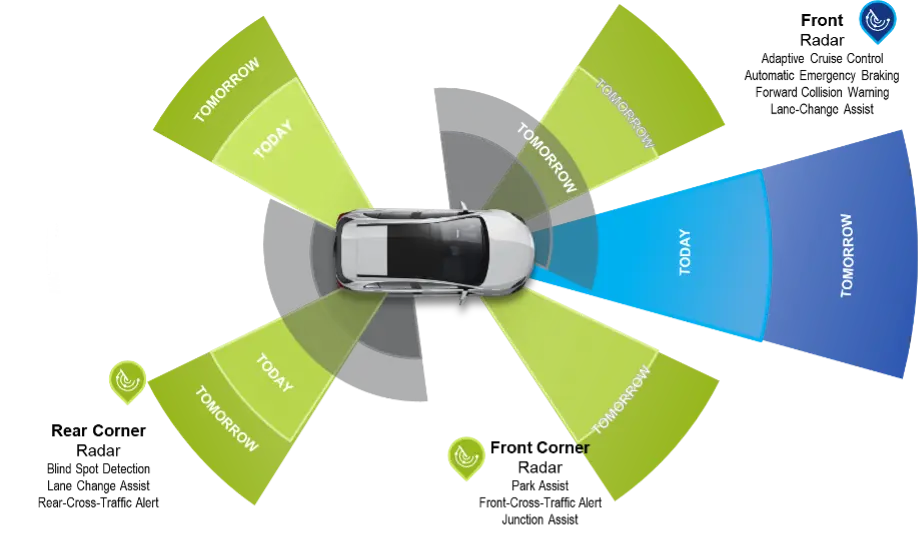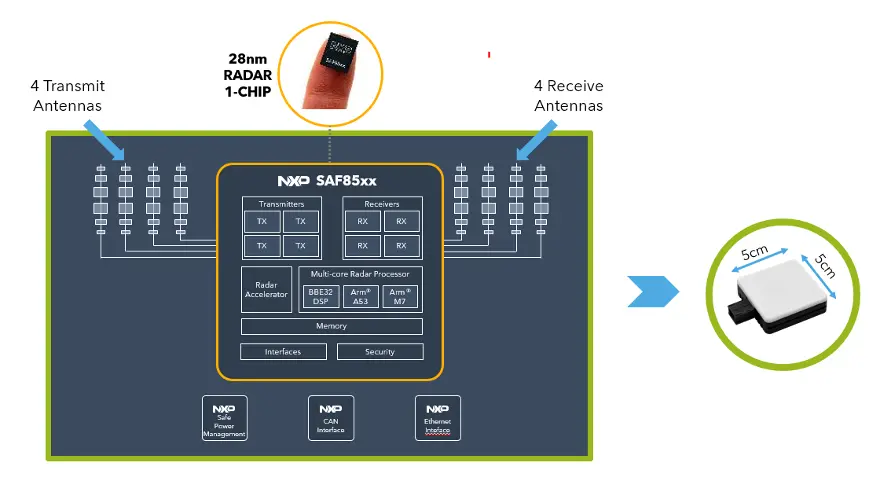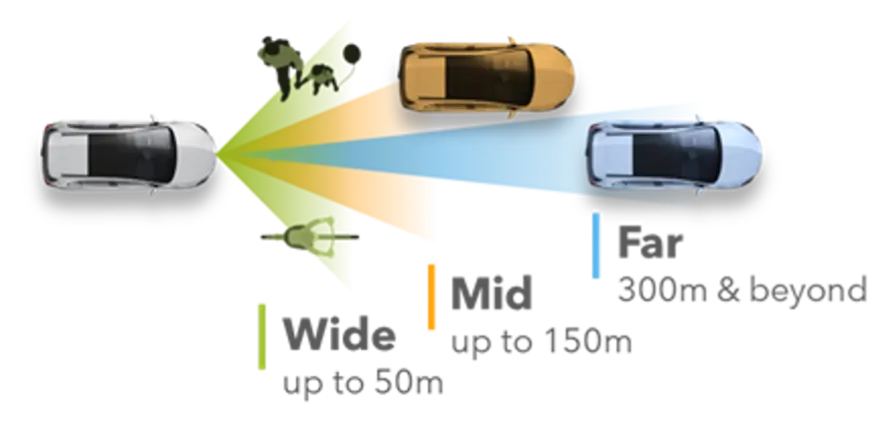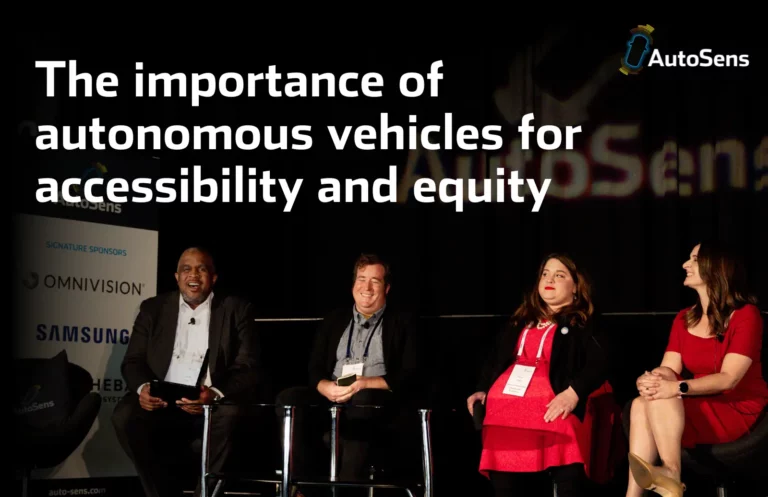How can radar advance to be cost effective, meet safety standards and drive adoption? In this article, Matthias Feulner, Senior Director ADAS at NXP Semiconductors, explores automotive radar innovations that are doing just that. Don’t miss Matthias at AutoSens Brussels, where he’ll be diving deeper into the future of radar.
Continuous innovation in sensor technology for advanced driver assistance systems (ADAS) and autonomous driving (AD) is critical to improving driving safety, preventing accidents, and saving lives. This article looks at two recent radar innovations – 28nm RFCMOS single-chip radar integration and high-resolution 4D imaging radar – that will help OEMs meet more stringent safety standards and enable comfort functions at SAE levels L2+ and beyond.
More demanding safety requirements
The European New Car Assessment Program (NCAP) 2025 safety roadmap and five-star safety ratings of the US government’s NHTSA regulations are introducing new mandatory requirements, in particular the ability to detect, separate and classify vulnerable road users, such as a fast-approaching motorcycle, at distances up to 200m, along with the ability to operate in challenging environmental conditions, such as during inclement weather or at night, both of which present challenges for cameras. Radar sensors are required to achieve longer detection range and support elevation sensing to enable better object classification.
Many mid-range vehicles beginning in the 2025 model year will be equipped with as many as five radar sensors – four at the corners and one at the front – for 360-degree surround sensing, and premium vehicles might make use of ten or more. Efficient management of larger amounts of detailed sensor data and coordination of many sensors, as well as scalability of sensor configurations across different car models, region-specific requirements and autonomy levels, will be key.

High-performance radar sensors in match-box size
Single-chip radar SoCs in the 28nm RFCMOS technology node, NXP’s 3rd generation RFCMOS, bring important improvements. The integration level has dramatically increased, reducing the size of a radar sensor to roughly the size of a matchbox.

The 2x RF link budget improvement compared to the previous generation now allows reliable detection of objects in the far distance beyond 300m and accurate separation of small objects, like pedestrians and motorcycle riders, in close proximity to larger ones, like a car or a truck. Next to angular resolution improvement, the addition of elevation sensing allows extraction of further details about objects and helps radar-based classification of objects based on richer information available in both vertical and horizontal dimension.
New comfort functions at L2+ and L3
OEMs are moving quickly to adopt software-defined vehicle (SDV) concepts, where new features are regularly added to expand the vehicle’s capabilities and generate continuous revenue streams through upgrades and subscriptions. While fully autonomous applications at L4 are growing steadily from a small base, it is the L2+ segment that is seeing fastest growth, enabling L3 functions to be offered to drivers while ensuring drivers retain responsibility for vehicle operation (Figure 3).
Such new comfort functions include traffic jam assist and highway pilot, which have recently been approved by authorities for passenger vehicles first. In the future, other AD features, such as urban pilot, may require reliable detection of objects unexpectedly crossing the vehicle’s travel path at up to 45 mph (70 km/h) in a crowded environment.
What is common to these new features is that they require a very detailed ‘image-like’ mapping of the vehicles surroundings, supporting challenging tasks like detection of lost cargo at 300m distance or more, the detection, separation and classification of vehicles in adjacent lanes at mid-range, or recognition of very small features like a curbstone at close proximity all around the vehicle.

LIDAR-like 4D Imaging Radar
Up until recently, LIDAR has been considered as the only technology able to generate a high-density point cloud of the vehicle’s surroundings, providing an image-like environmental map. While prior generations of radar technology were mainly used for basic detection of presence and distance of other vehicles, it did not provide ability to discern closely spaced objects in busy environments.
Now, 4D imaging radar takes radar-based sensing to an entirely different level. It provides aforementioned ‘image-like sensing’ and 3-in-1 sensor operation with a sub-one degree, fine-resolution point cloud output, thereby enabling ADAS sensor systems that solely rely on radar as a complement to camera input and thereby eliminating costly LIDAR sensors.
A sub-degree sensor resolution combined with detection ranges beyond 300m is made possible by careful sensor system optimization, leveraging advances in RFCMOS mmWave front-ends, heavy-duty radar signal processing hardware acceleration, and advanced radar algorithms.
The multi-mode capability enables detection of objects at different ranges simultaneously, from short- through mid- to long-range beyond 300m. A key enabler is usage of MIMO (multiple input, multiple output) waveforms that generate a large number of virtual antenna channels, so that parts of the antenna area can be dedicated to individual tasks or fields of view.

Conclusion
To meet the requirements of ever-more stringent safety standards and enable wide proliferation of new comfort features for the volume market, a new level of radar sensor capabilities is required within a cost, footprint and power consumption envelope that will drive adoption, not just in emerging higher level autonomy use cases, but more importantly, for high-volume passenger vehicles. Advanced 28nm RFCMOS single-chip radar and high-resolution 4D imaging radar technology change the economics of providing this capability, offering unmatched cost economy and paving the way towards more capable autonomous driver assistance systems and fully autonomous driving.
AUTOMOTIVE RADAR TECHNOLOGY INNOVATIONS POWER NEXT-GEN ADAS AND AUTONOMOUS DRIVING
- 2:40pm CET
- Wednesday 20th September
- Minerva Room

Matthias Feulner
Senior Director Marketing
NXP Semiconductors Germany GmbH







